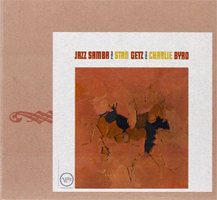
Note: the CD I listened to was the 2013 remaster with 5 previously unreleased bonus tracks.
If you've ever been hurt by your main squeeze, deceived by your best friend, or down to your last dime and ready to call it quits, Albert King has the solution if you have the time to listen.-from the original album liner notes by Stax’s original Director of Publicity and Grammy award winner Deanie Parker.
My listening habits developed over many years, of course, so I can't pinpoint when I started listening to classical music almost exclusively in the fall/winter months and blues music almost exclusively in the spring/summer months, but it happened at some point, here we are in spring, so it's time to start spinning some blues discs. And here we've got a blues legend cutting tracks with the Stax house band a.k.a. Booker T & the MGs. What's not to like? Widely considered King's best (and breakthrough) album, these songs introduced many to both the note-bending guitar work and gritty vocals of Albert King, firmly establishing his place in the blues revival of the '60s. If you like your R&B with a heavy emphasis on the B, this album is highly recommended.
Reviews/ratings:
- Billboard: "a realistic, soulful style which hits the mark"
- The Rolling Stone Jazz & Blues Album Guide (★★★★★): "a blues monument"
While the album failed to chart upon release, it has since been given many accolades, including the following:
- In the 2012 edition of Rolling Stone magazine's 500 Greatest Albums list, the album ranked at #491 (in the 2003 edition, it ranked at #499): "King’s first album for the Stax label combines his hard, unflashy guitar playing with the sleek sound of the label’s house band, Booker T. and the MG’s. Hits such as 'Crosscut Saw' and 'Laundromat Blues' earned King a new rock & roll audience."
- In 1985, the album was added to the Blues Hall of Fame as a Classic of Blues Recording.
- In 1999, the album was inducted into the Grammy Hall of Fame, which honors recordings of lasting qualitative or historical significance
- In 2020, the album was added to the National Recording Registry of the Library of Congress.
Tracks: Not a bad track to be found. My favorites are Crosscut Saw, Kansas City, Down Don't Bother Me, and Laundromat Blues.
Bonus tracks: alternate takes of Born Under A Bad Sign, Crosscut Saw, The Hunter, and Personal Manager along with an untitled instrumental which was certainly good enough for inclusion on the original album.
Personal Memory Associated with this CD: Several years ago I was visiting the Stax website, as one does, and they were having a sale: this CD plus a Stax t-shirt for $29.99. I was on that like gravy on biscuits.
I'm currently in the early stages of planning a trip next year that will not only include a trip to the Stax museum (again), but also take us to Clarksdale, Mississippi and as much of the Mississippi Blues Trail as we can possibly fit in. Hopefully, that will include a drive through Indianola to see the Albert King marker.















